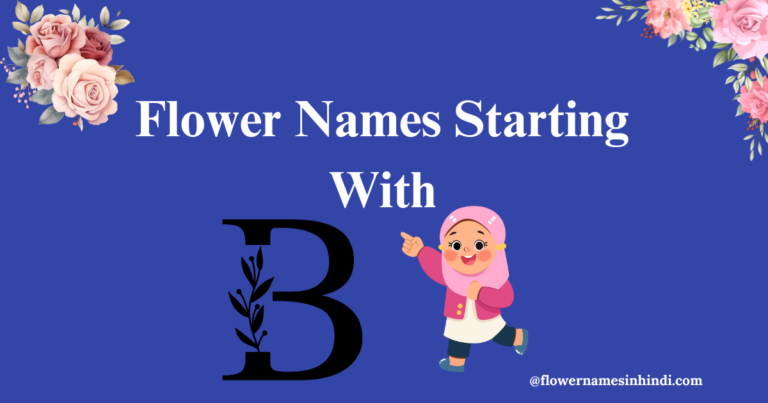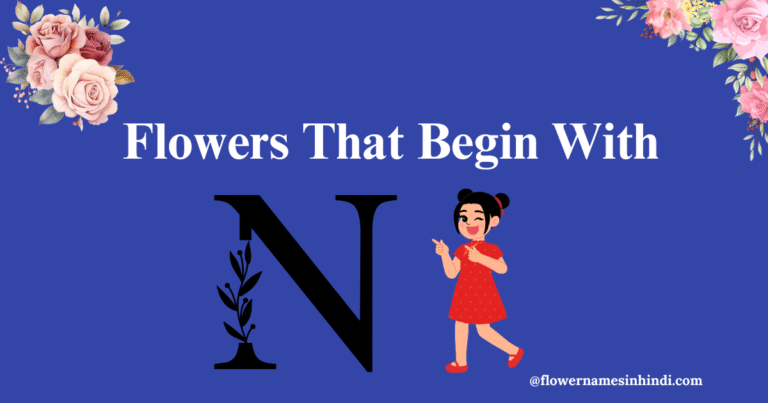12+ Unique Flowers Starting with Q That Will Leave You in Awe
As we near the finish line of our captivating journey through the floral alphabet, we have arrived at a truly intriguing destination: the letter Q! Who would have thought that this quirky, often-overlooked corner of the alphabet would hold such fascinating and rare flowers?
With their distinctive names and undeniable charm, flowers starting with Q bring an enchanting blend of whimsy and beauty that simply cannot be ignored.
If you missed it, don’t forget to explore flower names starting with O or P, there is so much floral magic in every letter!
Here are some of the most famous flowers starting with Q:
🌼 Quince
🌼 Quinoa
🌼 Quisqualis Fragrans
🌼 Quercus (Oak)
🌼 Queen of the Meadow
Quince

Quince is the only member of the Cydonia genus that belongs to the Rosaceae family. It is a small, deciduous tree with fragrant yellow-colored beautiful flowers.
It is suitable for full sunlight and well-drained soil. They have a fragrant yellow, pear-shaped fruit, that’s perfect for adding flavor to your cooking. You can eat them raw or turn them into jam, quince cheese, or cocktails.
It is a robust shrub, tolerates low to high pH, and grows well in many types of soils. Though sunshine is necessary to ensure fruit ripening and produce larger flowers, it can tolerate shade and sunlight.
| Scientific Name | Cydonia oblonga |
| Blooming Time | Spring |
| Symbolism | Love and Fertility |
| Number of Species | 1 main Species |
| Native To | Southwest Asia |
Quinoa | Flowers that Start with Q

Quinoa is a stunning flowering plant that belongs to the unique Amaranthaceae family. It is best known for its nutrient-packed, edible seeds. These seeds are a powerhouse, bursting with Vitamin B, protein, fiber, and a variety of essential minerals.
You will be surprised to know that raw, uncooked quinoa contains 13% water, 64% carbs, 14% protein, and 6% fat, making it a well-rounded food choice.
They usually prefer sandy, well-drained soil with a slight saltiness and a pH range between 6 and 8.5. While its delicate, green blooms grow in dense clusters, the plant itself boasts broad, green leaves and can reach impressive heights of up to 6 feet or more.
Quinoa has been cultivated for over 5,000 years and was considered sacred by the ancient Incas. They referred to it as “the mother of all grains” and believed it gave strength to their warriors.
| Scientific Name | Chenopodium quinoa |
| Blooming Time | October to December |
| Symbolism | Health ad Energy |
| Number of Species | Approximately 150 Species |
| Native To | South America |
Quisqualis Fragrans | Flowers that Start with Q

Burma creeper, Rangoon creeper, and Chinese Honeysuckle are the other names of Quisqualis fragrans belonging to the Combretaceae family.
The flowers are cylindrical, with oval petals that can grow up to 6-8 mm long. They are scented and have long receptacles holding pollinators with long tongues.
It is poisonous if ingested, especially to children, and can cause skin discomfort and stomach diseases. It needs well-drained soil and full to moderate shade.
| Scientific Name | Combretum indicum, |
| Blooming Time | Summer to fall |
| Symbolism | Love and Success |
| Number of Species | Approximately 12 Species |
| Native To | Tropical Asia |
Quercus | Flowers that Start With Q

Quercus is a hardwood tree and shrub that belongs to the Fagaceae. It is commonly known as “Oak”. Oaks are deciduous or evergreen hardwood trees with spirally grouped leaves, often with lobed margins. The oak blooms are small, yellowish-green in colour.
They thrive great in well-drained soil and under full sunlight. They have a long lifespan, a maximum of 400 years.
Oaks have long been revered in mythology. In Greek mythology, the oak was sacred to Zeus, the king of the Gods.
The ancient Druids also considered oak trees to be sacred, associating them with wisdom and protection.
| Scientific Name | Quercus spp |
| Blooming Time | Spring |
| Symbolism | Strength and Endurance |
| Number of Species | About 500 Species |
| Native To | Northern Hemisphere |
Queen of the Meadow

The queen of the meadow, also called “ Mead wort”, “Lady of the meadow,” “Meadsweet”, “ Dollof,” and “Bridewort”, is a perennial herbaceous Rosaceae family. They are famous for their large, dome-shaped bunches of pink, creamy-white flowers, which have a very strong, sweet smell similar to antiseptic.
It offers pain-relieving qualities due to compounds similar to aspirin. It was soaked in water to make a pain-relieving tea before painkillers became popular.
The strong, sweet fragrance of the flowers has led to their use in aromatherapy. Essential oils and floral essences made from Queen of the Meadow can promote relaxation, reduce stress, and ease tension, contributing to overall emotional well-being.
| Scientific Name | Filipendula ulmaria |
| Blooming Time | June to August |
| Symbolism | Protection |
| Number of Species | 1 main Specie |
| Native To | Europe and Western Asia |
Quamash | Flowers that Start with Q

Quamash is a delicate perennial herb that belongs to the Asparagaceae family. Other common names for this plant are “ kwetlal” and “Camas.” They produce multiple loose clusters of star-shaped flowers on long stems up to 2 feet high.
Its leaves are grass-like and grow in a basal rosette. They flourish in humus-rich, well-drained soil in moderately shaded forests, rocky outcrops, and open meadows or grasslands.
| Scientific Name | Camassia quamash |
| Blooming Time | Late Spring to early Summer |
| Symbolism | Food |
| Number of Species | Approximately 8 Species |
| Native To | Western North America |
Quisqualis Indica

Rangoon Creeper and “Burma Creeper” are the common names of Quisqualis Indica. It is among the most charming flowers on the earth and belongs to the Combretaceae family.
Its flowers are round and change their colour with their age from white to pink and then bold red. Their changing flower colour habit is considered as a great strategy to attract more pollinators.
Rangoon Creeper is dangerous if consumed, especially for children. Quisqualis Indica flourishes best in full sunlight and well-drained soil.
The plant’s flowers and leaves are relatively safe for ornamental use, the seeds of Quisqualis Indica are toxic and can cause harm if ingested.
The seeds contain compounds that can lead to poisoning, making the plant dangerous, particularly to children and pets.
| Scientific Name | Combretum indicum |
| Blooming Time | Spring to early summer |
| Symbolism | Love and Protection |
| Number of Species | Aroumd 4 Species |
| Native To | Malaysia and Philipienes |
Queen Anne’s Lace | Flowers Beginning With Q

Queen Anne’s Lace is a very charming flowering plant that belongs to the Apiaceae family. It is recognised because of its lovely white, lacy-looking flowers.
It is also called a wild carrot bishop’s lace or bird’s nest but is mostly commonly known as wild carrot because of its carrot-like appearance.
Some people can experience skin irritation if they come into contact with Daucus carota leaf, especially if the foliage is moist.
| Scientific Name | Daucus carota |
| Blooming Time | July-September |
| Symbolism | Sanctuary and Good luck |
| Number of Species | Around 47 known Species |
| Native To | North America |
Conclusion
And so, we conclude our whimsical journey through flowers that start with a Q, leaving behind a trail of rare and enchanting blooms that never fail to surprise. But here is the twist: what other hidden treasures does the alphabet hold? Are there even more extraordinary blooms waiting to be uncovered?
So, don’t stop here, dive into our next floral adventures, share the joy with your cousins and friends, and let’s keep the curiosity blooming!
Related Articles:
- Flower Name Starting With I
- Flower Name Starting With J
- Flower Name Starting With K
- Flower Name Starting With L
- Flower Name Starting With M







